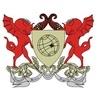Check out what is new in Animal Feed
Find the best technical articles, forums, and videos on Animal Feed at Engormix. Enter now and interact with the world's largest agricultural social network.
.mp4&w=3840&q=75)
Dr. Stephen Adejoro (Livestock Industry Foundation for Africa) shares with Engormix members his comments on this usual problem in raw materials and its consequences on vaccination, health and performance....
Comments : 1
Recommendations: 3
.mp4&w=3840&q=75)
Dr. Piotr Stanislawski shares his experience with Engormix members regarding the use of enzymes in poultry diets and gives his advice on how to do it properly....
Comments : 89
Recommendations: 31
A study was conducted to investigate the hypothesis that over-processing (OP) of meat and bone meal (MBM) exacerbates infection with necrotic enteritis in normal and high phytase diets. A total of 768 Ross 308 male chicks were randomly assigned to 8 treatments with 6 replicate floor pens each housing 16 chicks using a 2 × 2 × 2 factorial arrangement of treatments for 42 d. Factors were: NE challenge, no or yes; phytase* level, 500 or 5000 FTU/kg (both using 500 matrix values for...
Comments : 0
Recommendations: 0
A feeding study was conducted to examine the efficacy of a synergistic blend of feed additives on growth performance, livability, gut integrity, immunity, caecal microflora and footpad health in broilers challenged with subclinical necrotic enteritis (NE). Additives were: A) synergistic blend of medium chain fatty acids (MCFA), slow-release C12, target release butyrates, organic acids (OA) and a phenolic compound; B) synergistic blend of partly buffered OA with MCFA; C) synergistic blend of...
Comments : 0
Recommendations: 1
Probiotics are showing promise as antibiotic replacements but more scientific evidence is required to validate their beneficial effects. Previous broiler feed trials conducted with Bacillus amyloliquefaciens strain H57 (H57) indicated variable bird performance (Bajagai, 2018). In these trials, birds were kept under “optimal” experimental conditions, where most of stressors were absent from the environment. There is some evidence that probiotics are best applied when a bird or...
Comments : 0
Recommendations: 0
.mp4&w=3840&q=75)
Edgar Oviedo-Rondón (North Carolina State University) went over the research presented in different papers on this subject, during IPPE 2022 in Atlanta, USA....
Comments : 0
Recommendations: 0
...
Comments : 0
Recommendations: 0
INTRODUCTION Phosphorus is an essential mineral for the formation and maintenance of bone structure, playing additionally a number of functions in the body. According to UNDERWOOD & SUTTLE (1999), phosphorus is found in a high concentration in bone tissue where together with calcium they form hydroxyapatite, which is the major constituent of the skeleton. Phosphorus portion not related to the structural function in the body is contained in high-value organic molecules,...
Comments : 0
Recommendations: 0
It is not the Mycotoxins that replicate themselves or form themselves, but the various fungi or Mycelium which produce them. It is the fungi that require the conducive environment to produce mycotoxins and various fungi produce peculiar, or multiple Mycotoxins that range from Aflatoxin to Fuminoxin, DON and Zearalenone, etc. The conducive factors for these fungi must include appropriate substrate like corn, soy, groundnut, wheat, etc on which they require to grow. Water content in the...
Comments : 2
Recommendations: 2
...
Comments : 0
Recommendations: 0
Prevalence of numerous livestock diseases and increasing emphasis on animal health is expected to augment yeast market share for the animal feed application. The demand for high-quality meat has propelled significantly across the globe in recent years. In a bid to follow a high-protein diet, consumers are steadily shifting towards animal-based products.
Use of yeast in animal feed could help meet this growing demand. The product can stimulate growth of infant and young aged...
Comments : 0
Recommendations: 0
Introduction Eucalyptus is a medicinal plant that belongs to Myrtaceae family, originated in Australia but found worldwide, especially in tropical and subtropical regions (Salari et al., 2006). In humans, eucalyptus leaf is used to reduce nasal congestion in common cold during cold winter months (Sadlon and Lamson, 2010). Eucalyptol (1,8-cineole) is a terpene oxide and major constituent (more than 70%) of eucalyptus essential oil (EEO), which is used as a flavoring agent in food...
Comments : 1
Recommendations: 1
INTRODUCTION The poultry gastrointestinal tract (GIT) is home to a complex, dynamic, and variable bacterial-dominated microbiota (Zhu et al., 2002). This GIT microbiome variation may be explained by different host characteristics and environmental factors (Kers et al., 2018), including birds age (Ballou et al., 2016; Pedroso et al., 2016), sex (Torok et al., 2013; Zhao et al., 2013), type and breed (Videnska et al., 2014; Kim et al., 2015), and GIT regions (Yeoman et al., 2012)....
Comments : 1
Recommendations: 0
Animal feed protein ingredients market share is poised to witness steady growth. This is credited mainly to the growing demand for protein ingredients in animal feed applications, and the burgeoning agricultural sector supported by evolving standards of living worldwide.
The intensifying focus of farmers on the health of their livestock, and their efforts to prevent deteriorating health conditions and boost productivity will also add impetus to industry growth over the coming years....
Comments : 0
Recommendations: 0
“Reliance on protein for animal feed application to increase nutritional value continues to rise, paving the way for the next generation of healthy ingredients”
One of the key factors driving the expansion of the protein market for animal feed application is the robust demand for naturally available resources to increase the nutrition of...
Comments : 0
Recommendations: 0
1. Introduction It is well known that female and male broilers chickens are separately reared in the Italian production system, as the consumers seek three different market classes of birds: the so-called light-, medium- and heavy-size broilers. In particular, heavy birds are male broiler chickens that reach 3.4–3.6 kg of live weight during 54–58 day rearing cycles, in order to provide carcasses around 2.5- to 2.6-kg for the production of cut-up and further processed...
Comments : 0
Recommendations: 0
Liptosa newsletter. Monthly Report RAW MATERIALS SUMMARY We have started the year 2022 with the same instability and volatility of raw materials suffered during 2021. In this volume of our newsletter,...
Comments : 51
Recommendations: 4
1. Introduction Poultry and fish are both increasing in popularity as protein sources in human diets. Fish consumption has increased by 122% between 1990 and 2018 [1] with an over 500% rise in aquaculture production globally over the same timescale. Salmon production is estimated to reach 2.7 million tonnes (MT) by 2021, compared to 0.8 MT in 2000 [2]. Similarly, poultry meat production is also increasing year on year and is predicted to have reached 137 MT in 2020 [1]. This...
Comments : 0
Recommendations: 0
1. Introduction Effective functionality and health of the gastrointestinal tract (GIT) are important factors in determining animal performance [1]. These aspects are particularly relevant in poultry farming, where animals capable of growing rapidly within a short period of time are needed. Three components of gut health have previously been suggested: diet, mucosa (which is, in turn, characterized by the digestive epithelium, the gut-associated lymphoid tissue and the...
Comments : 1
Recommendations: 0


.jpg&w=3840&q=75)


.jpg&w=3840&q=75)


















